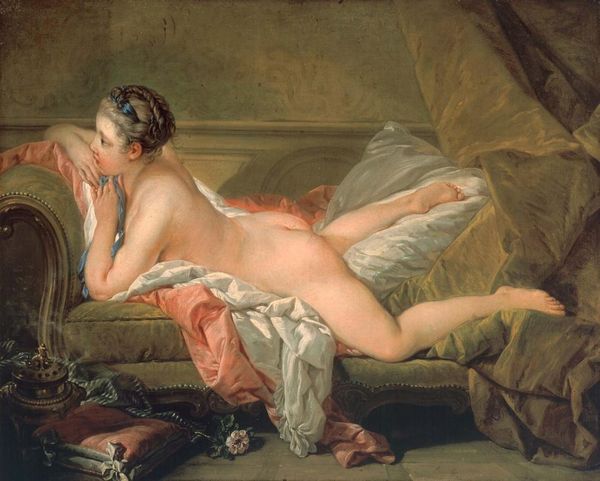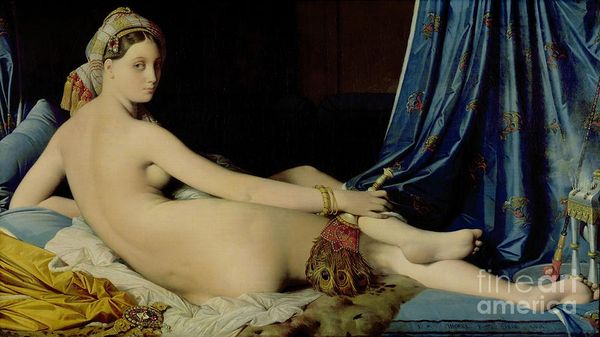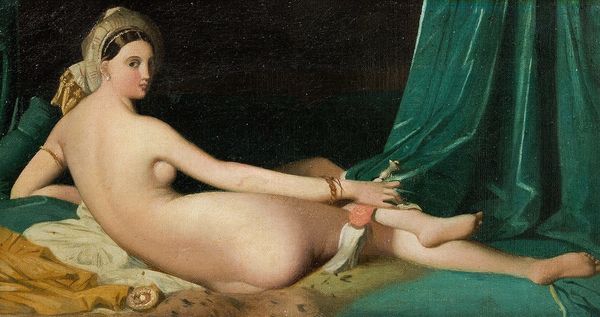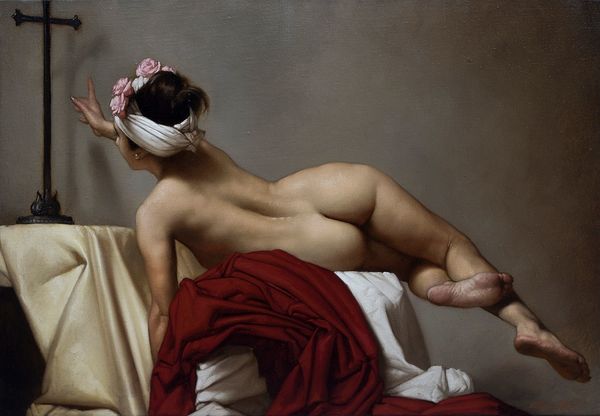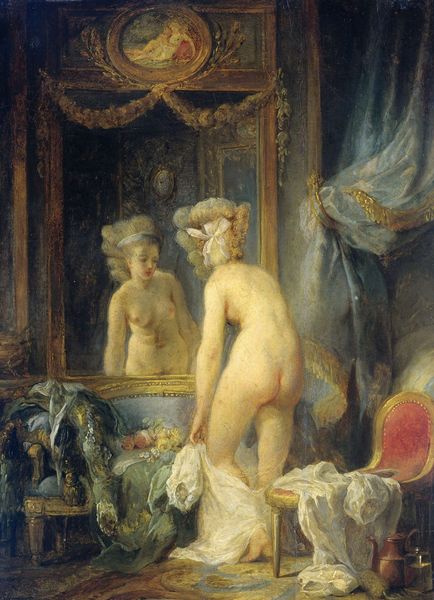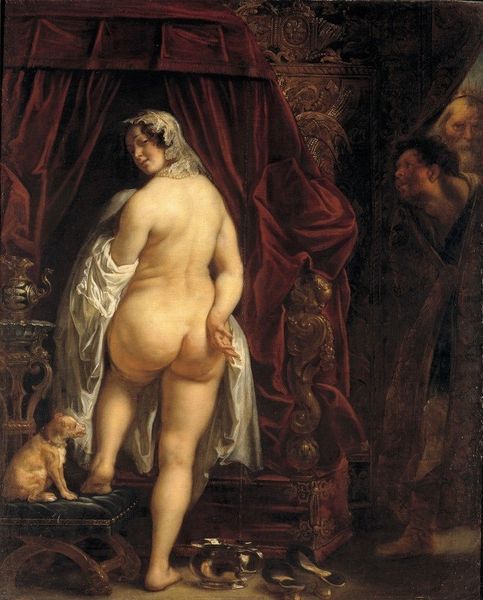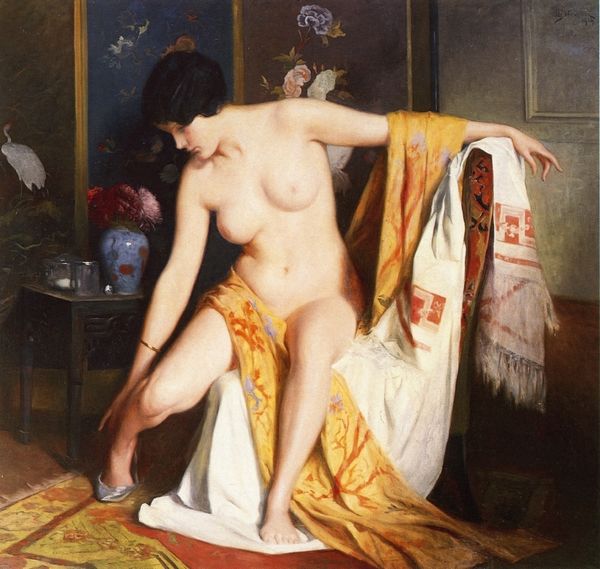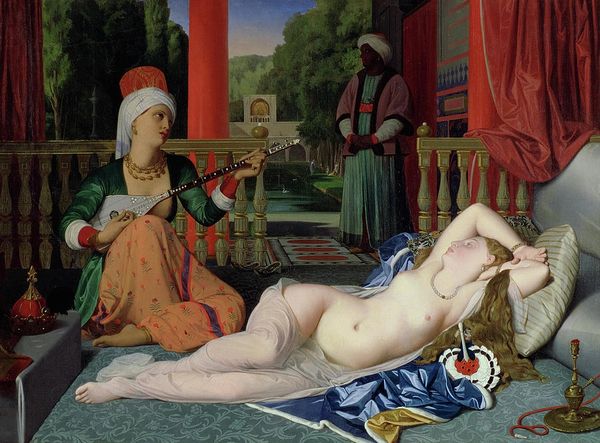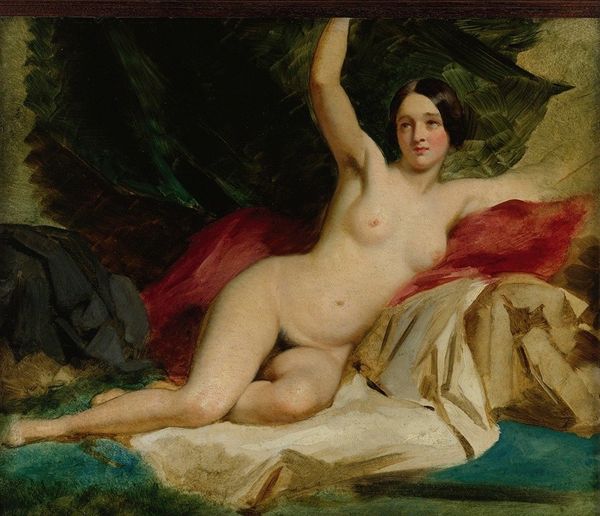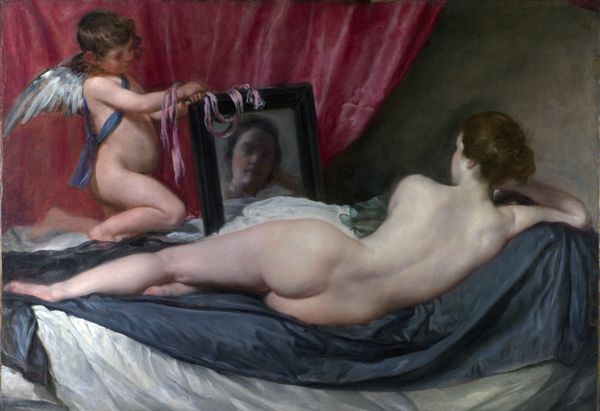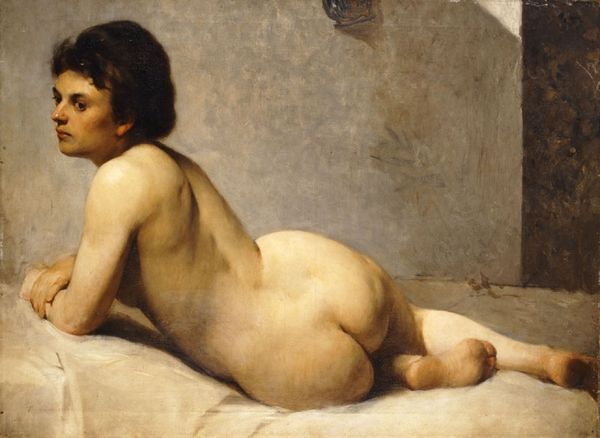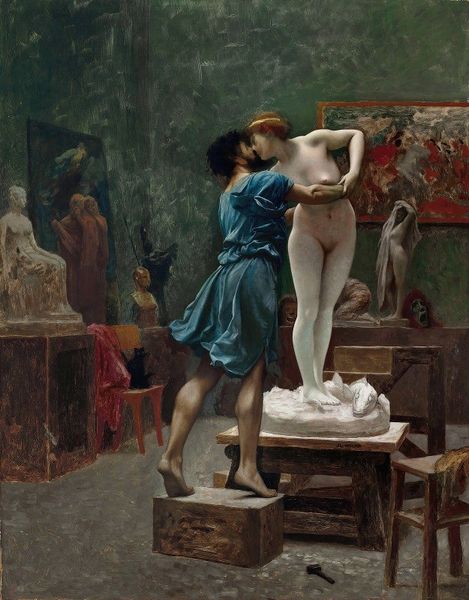
painting, oil-paint
#
portrait
#
gouache
#
painting
#
oil-paint
#
romanticism
#
academic-art
#
nude
Copyright: Public domain
Jean-Auguste-Dominique Ingres painted "The Small Bather" in 1828, depicting an idealized female nude in a Turkish bath setting. The image creates meaning through its orientalist fantasy. During this period, France was expanding its colonial reach into North Africa. The visual codes of the harem, with its sensualized and passive women, became a symbol of the exotic "other" against which European identity was defined. Ingres never visited the Middle East. Instead, he constructed his image from travelogues and second-hand accounts, reflecting the dominant cultural imagination of the time. Was the artwork self-consciously conservative or progressive? Ingres' work was considered conservative in its adherence to academic tradition, but its orientalist themes were also part of a broader colonial project that sought to legitimize French power. Historians can interpret this artwork by researching the cultural context of 19th-century France, including its colonial history, orientalist discourse, and the role of the art academy in shaping artistic production.
Comments
No comments
Be the first to comment and join the conversation on the ultimate creative platform.
